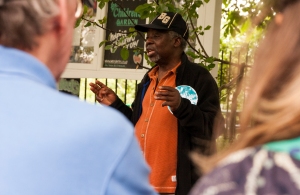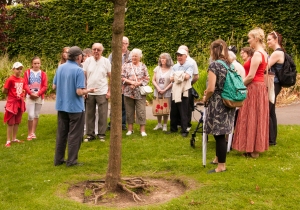We return to Govan Community Project this week to hear from Artist and Illustrator Alice Dansey Wright. She fills us in on the progress the group have made in such a short space of time!
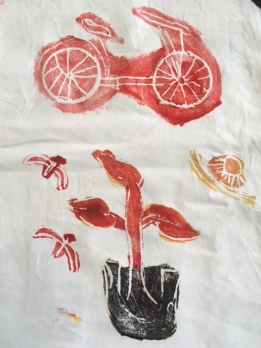
Rosie and I have been working with two groups within Govan Community Project- the Homework Group for kids on a Monday night and the Men’s Group on a Friday night. Both groups meet in the community flat in Cardonald, which is a normal flat that has been converted in to a series of community rooms and a kitchen. The Men’s group meet to play football, make new friends and eat a meal together. The group has a facilitator who is helped by two local volunteers- a university student and an S5 pupil.
Over the course of two 2-hour workshops with the men’s group we met four men in addition to the facilitator and volunteers. The men keep in touch using a WhatsApp group and the atmosphere is very relaxed and friendly, centered around the preparing, cooking and sharing of a meal (which Rosie and I were lucky enough to get a plate of too). Due to the relaxed atmosphere, slower pace and language ability of the group we were able to introduce the project in a more developed way which started with us discussing images and information about a series of existing Glasgow statues.
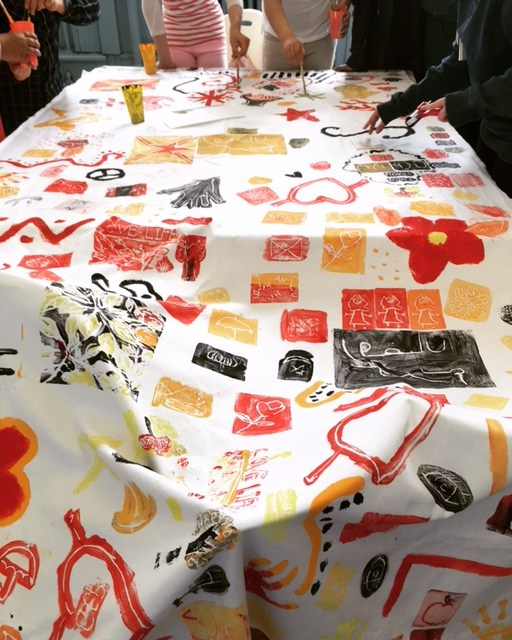 The men shared their insights and knowledge about Glasgow and overall were in agreement that representation of different cultures in public sculpture is important, alongside information about Glasgow’s industrial past such as the ship building trade. We also discussed protest, rebellion and activism – looking at the rallies, talks and gatherings around George Square and La Pasionaria, the statue of communist politician Dolores Ibarruri which commemorates the 534 British volunteers who joined the fight against Franco’s regime in the Spanish Civil War. The slogan ‘People Make Glasgow’ was brought up as one of the men had seen it all over the city and didn’t understand what it was for/what it meant. After discussing this we felt that the slogan reflected our ideas for the As I See It project well.
The men shared their insights and knowledge about Glasgow and overall were in agreement that representation of different cultures in public sculpture is important, alongside information about Glasgow’s industrial past such as the ship building trade. We also discussed protest, rebellion and activism – looking at the rallies, talks and gatherings around George Square and La Pasionaria, the statue of communist politician Dolores Ibarruri which commemorates the 534 British volunteers who joined the fight against Franco’s regime in the Spanish Civil War. The slogan ‘People Make Glasgow’ was brought up as one of the men had seen it all over the city and didn’t understand what it was for/what it meant. After discussing this we felt that the slogan reflected our ideas for the As I See It project well.
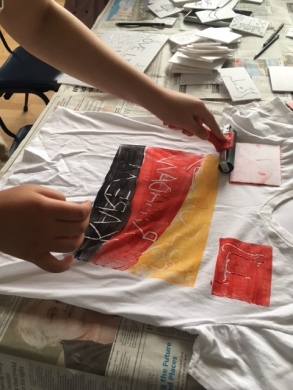
The men were invited to develop a series of symbols that represented them as well as symbols that could represent Glasgow (which was a slight development on what we did with the Homework group). Despite some protestations about not being able to draw all of the group produced interesting drawings that were subsequently turned in to blocks and symbols for the statue making activity.
On the 2nd of June we held our big workshop/making day at Kinning Park Complex. Along with volunteers and staff from GCP both the men’s group and the kids from the Homework Group came together to collaboratively block print and paint a selection of t-shirts and a large piece of fabric which will be turned into our statue.
Alice
As I See It: Missing Statues culminates with a special event at South Block on Saturday 17th June where the statues will be unveiled. They will then be exhibited at South Block from 19th – 23rd June. For more info visit the Facebook event page.
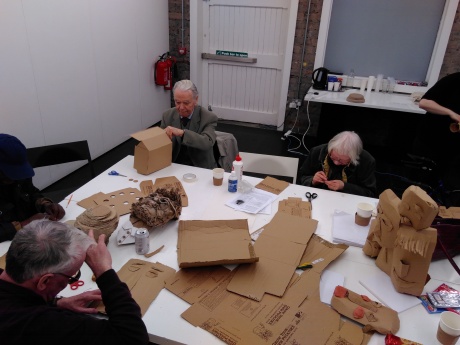
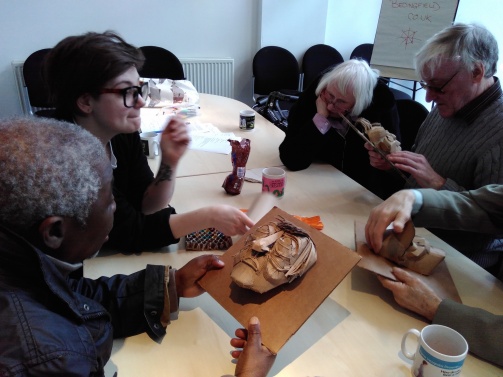
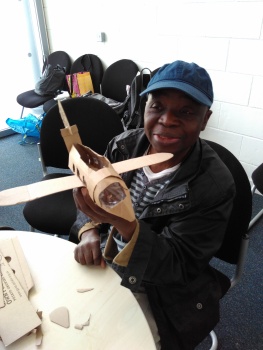 Emmanuel has made the most intricate model of a plane. It is small but incredibly detailed and the viewer can see through the windows to the rows of tiny chairs inside, the propellers even spin when you blow on them. My hands made this piece however it is entirely Emmanuel’s – each week he has described to me every single element he envisions from how many wheels it should have to the specific wingspan it needed. He drew imaginary lines with his fingers for where every cut and every join had to be. He told me off when it felt as though I hadn’t done exactly hat he had asked. We’ve made something together but he is the artist and I was a tool to achieve the image he had in his head.
Emmanuel has made the most intricate model of a plane. It is small but incredibly detailed and the viewer can see through the windows to the rows of tiny chairs inside, the propellers even spin when you blow on them. My hands made this piece however it is entirely Emmanuel’s – each week he has described to me every single element he envisions from how many wheels it should have to the specific wingspan it needed. He drew imaginary lines with his fingers for where every cut and every join had to be. He told me off when it felt as though I hadn’t done exactly hat he had asked. We’ve made something together but he is the artist and I was a tool to achieve the image he had in his head.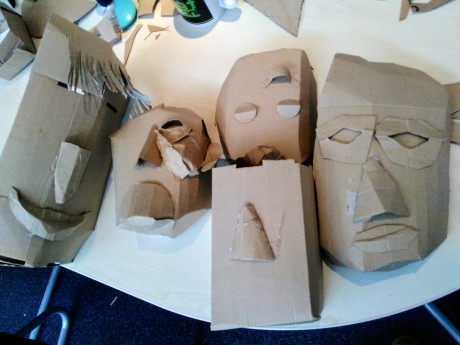
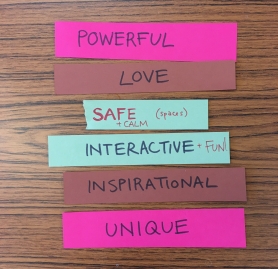
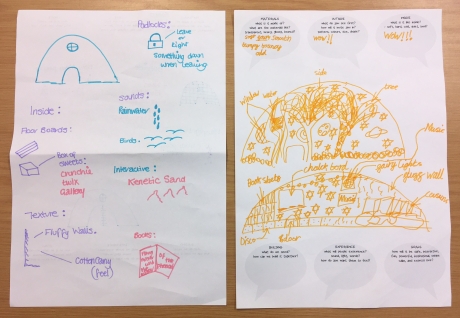



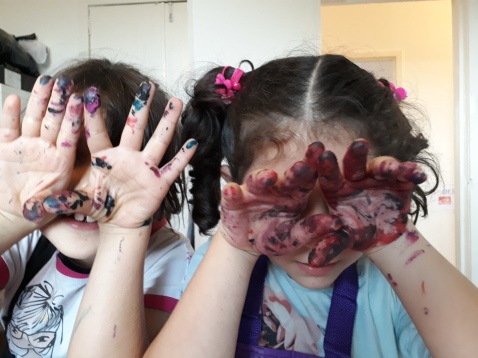






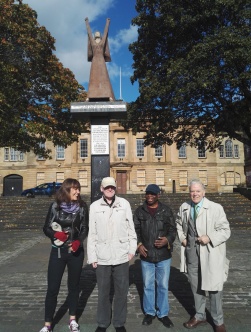
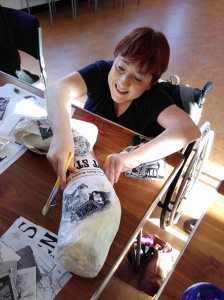
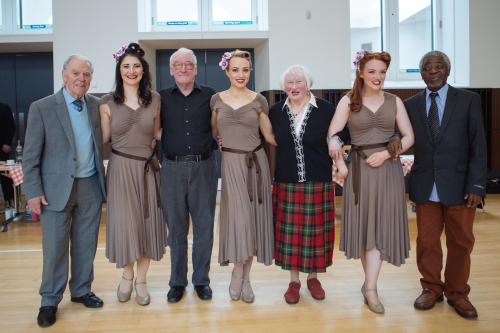
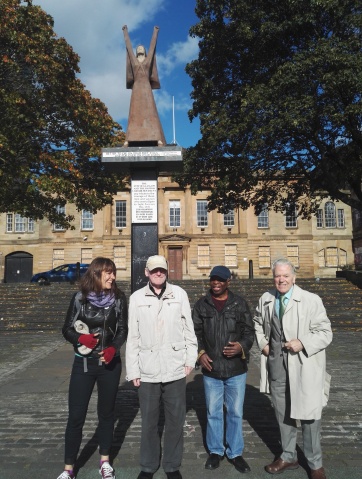
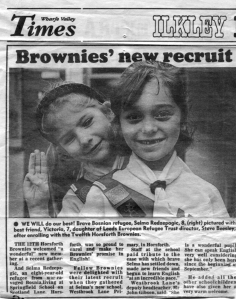
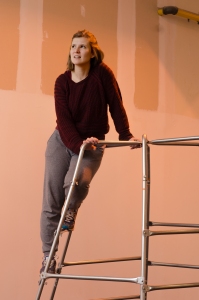
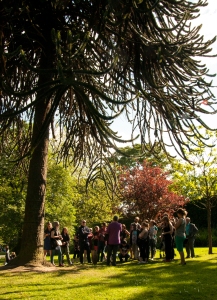 As part of our As I See It project, we’ve been collecting stories from across Glasgow inspired by the Botanic Gardens. This is our final blog sharing these stories with you. This time the stories are from a lovely bunch of folk at Castlemilk Seniors Centre. Thank you once again to everyone who contributed.
As part of our As I See It project, we’ve been collecting stories from across Glasgow inspired by the Botanic Gardens. This is our final blog sharing these stories with you. This time the stories are from a lovely bunch of folk at Castlemilk Seniors Centre. Thank you once again to everyone who contributed. 